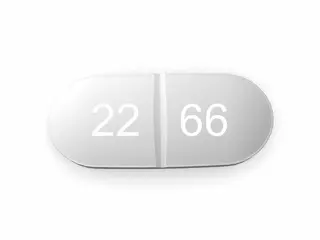Muscle Relaxant
Effective muscle relaxants to relieve tension and spasms fast. Shop trusted brands for quick pain relief and improved mobility. Safe, high-quality products available for purchase now.
Muscle relaxants are a widely used category of medications prescribed to relieve muscle spasms, stiffness, and discomfort. These drugs work by acting on the central nervous system or directly on the muscles to reduce tension and improve movement. Among the popular muscle relaxants available, baclofen, robaxin, and zanaflex stand out for their effectiveness and specific uses.
Baclofen is commonly used for conditions involving spasticity, such as multiple sclerosis and spinal cord injuries. It acts on the spinal cord nerves to calm muscle stiffness and reduce spasms. Many patients report significant improvement in muscle control and pain reduction after taking baclofen. However, it's important to monitor for side effects like dizziness, fatigue, and weakness, especially when starting the medication or increasing the dosage. Baclofen is generally taken orally, with doses adjusted based on the severity of symptoms and individual response.
Robaxin, known generically as methocarbamol, offers rapid relief of muscle pain and spasms. It is often prescribed after injuries, strains, or surgeries that cause muscle discomfort. Robaxin works by depressing the central nervous system to relax skeletal muscles. Users commonly experience faster alleviation of muscle pain and improved mobility, allowing them to resume daily activities sooner. Side effects can include drowsiness, light-headedness, and gastrointestinal disturbances, so caution is advised when performing tasks that require alertness. Robaxin is usually available in tablet form and is often combined with rest and physical therapy for best results.
Zanaflex, or tizanidine, is another effective muscle relaxant known for its strength in treating muscle spasticity. It works by blocking nerve impulses that cause muscle tightness. Patients with conditions like multiple sclerosis or spinal cord injuries frequently benefit from zanaflex, which can help reduce pain and improve muscle function. Zanaflex has a relatively short duration of action, making it useful for managing spasms as they occur throughout the day. Common side effects include dry mouth, drowsiness, and low blood pressure, which necessitate careful dosage management. Zanaflex is usually prescribed at low doses initially, with gradual adjustments as needed by the healthcare provider.
All three muscle relaxants—baclofen, robaxin, and zanaflex—have proven efficacy in managing muscle pain and spasticity. Choice of medication often depends on the underlying cause, severity of symptoms, and patient tolerance. Some may benefit from baclofen's direct action on the spinal cord, while others find robaxin more helpful after acute muscle injuries. Zanaflex is preferred by some due to its ability to act quickly on nerve impulses but requires close monitoring due to its cardiovascular effects.
Patients should always follow dosage instructions carefully and report any unusual side effects to their doctor. Muscle relaxants are frequently used alongside physical therapy and lifestyle changes to promote optimal recovery. Avoiding alcohol and other sedating drugs during treatment is generally recommended to minimize adverse effects.
In summary, muscle relaxant medications like baclofen, robaxin, and zanaflex are essential tools in the management of muscle spasm-related conditions. They help reduce pain, improve mobility, and enhance quality of life for many patients. Selecting the right medicine involves considering individual needs, potential side effects, and the specific muscle problem being treated.


